Interview: How HØLTE sells premium kitchens at a fraction of the price
Thu 18th Apr 2024 by Tim Wallace

Interview: How HØLTE sells premium kitchens at a fraction of the price
By adding bespoke elements to ranges from Ikea and Howdens, London-based manufacturer and retailer HØLTE offers clients a lower-cost route to a luxury-end kitchen. Tim Wallace talks to owners Tom and Fiona Ginnett.
Q: What’s the background to the company?
Tom: It all began back in 2012 when we built our own kitchen for fun. Fi used to work in luxury fashion and I was a landscape architect. Then we did one for a friend, then more friends, then their parents... It got to a point where we were taking time off to fit kitchens and spending our weekends on them. We realised something had to give when I nearly crashed the van because I hadn’t slept for about four days. We launched a company called Witlof in 2015, then started developing the HØLTE brand in 2017. We launched our website in 2018 and opened a showroom in Hackney in April 2019.
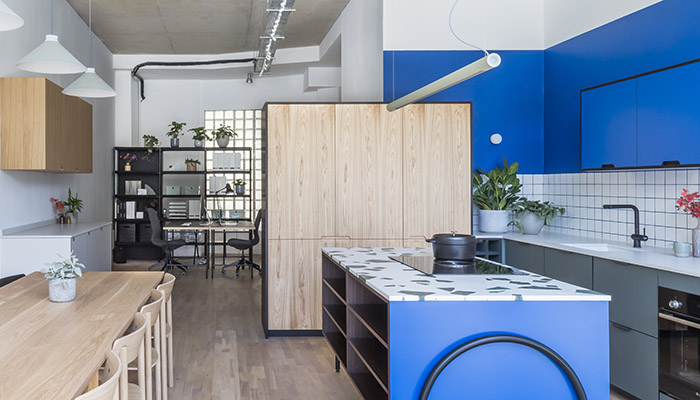
Q: And the idea is that clients who can’t afford a luxury kitchen buy one from Ikea or Howdens, then come to you for the bespoke elements? So they get a great kitchen and pay far less than they would otherwise?
Tom: Yes, we thought we’d identified a gap in the market between top-end high street and bottom-end bespoke. Our aesthetic was more appealing to people who couldn’t afford a £40,000-£60,000 kitchen and weren’t particularly happy with the high street kitchen offerings. That’s when we looked at how we could significantly reduce the price - and the only way was to use proprietary cabinetry. At the time nobody was doing it in this country, only in various parts of Scandinavia.
Q: But this isn’t just about kitchens?
Tom: No, we offer a full system with flexibility and we do quite a lot of projects across multiple rooms in the house.
Fiona: We recently did a project in North West London of about 11 rooms. The client said it was amazing that we’d achieved that aesthetic using the combination of an Ikea system and ours. And that’s where our niche is - that kind of hybrid project. The client was tendering to joinery firms who were charging him 50% more.
Tom: But clients need to recognise that although they save a lot of money, they need to invest more time into the management of the process. It’s more hands-on with products coming from other sources, not just from us. But we have a back door into the Ikea London planning team so we can coordinate and collate that order as well.
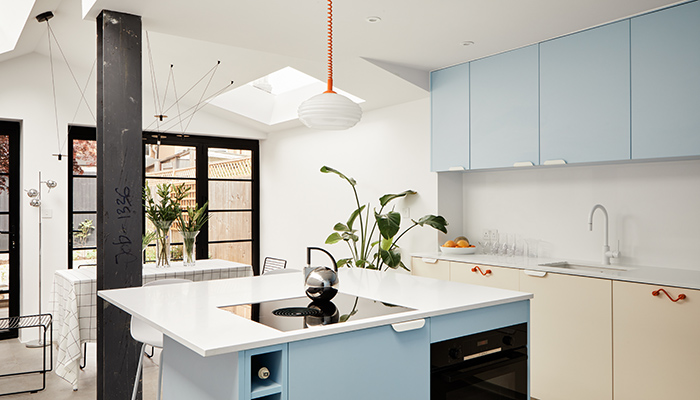
Q: What’s your relationship like with Ikea and Howdens?
Tom: Ikea are very happy and supportive but Howdens are absolutely not.
Fiona: No, Howdens are not very forthcoming with information, either to the end user or the builder. They’re much more difficult to work with, and trying to work out which cabinet is specified on their list is quite a challenge.
Q: What’s your design philosophy?
Fiona: It's ridiculous that a hundred years ago a fitted kitchen didn’t exist. Now we have to have huge expanses of units, loads of cabinetry and appliances we never use. We hope people will start to think slightly differently. What do you actually need? What do you use? Think about a higher quality but more efficient, better designed model. And make it modular so it can be taken apart. Make it freestanding, not fixed to the wall. This is what we were shouting about back in 2021. We’re just keen to develop this system and the fully circular kitchen model. It’s very difficult to legitimately achieve a true circularity but we believe it will be possible.
Q: Who produces your furniture?
Fiona: We used to make everything ourselves but we outsourced it a couple of years ago to a company well versed in high end joinery and volume. The ambition is to have a really sustainably run and responsible factory, but that would be in the far distant future.
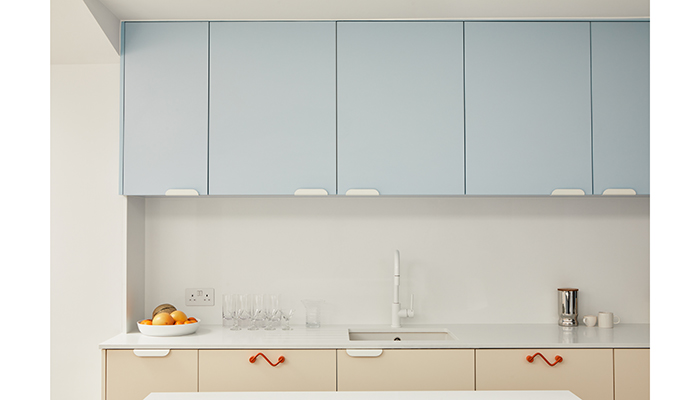
Q: How’s business going?
Fiona: We were riddled with guilt over profiting from Covid but the growth was exciting. For a couple of years we were doubling turnover. But it’s slowed down significantly in the last couple of years. The majority of our projects tend to be a part of a larger building project and people have been hit by the increase in construction prices. The rise in interest rates also really hit people. Anyone planning to do work who re-mortgaged last year was suddenly in a different position. Others are waiting for a drop in rates but it’s come down a bit and there’s a better mood out there.
Q: What’s your turnover?
Tom: Last year was £1.9m, projected turnover is £2.3m.
Q: How many projects do you do per year and what’s the average order value?
Fiona: We did 130 last year. Fronts and worktop only supply would be about £15,000. That would be a bank of tall cabinetry and an island, maybe shelving and handles, and appliances from brands like Bora and Quooker. Then there might be another £2,000 spent on Ikea carcases and drawers, plus the fitting which really varies. We have a minimum order of £3,000. For a whole house it can be anything up to 80,000-£90,000.
Q: What’s your customer base?
Fiona: We’ve been incredibly London-centric until relatively recently. Pre-Brexit we used to sell a lot in Europe but that completely died out. The majority of clients are young and middle class with young families. We get a lot of work through interior designers and architects. We’ve done quite a bit outside London recently – from Leeds, Manchester and Glasgow to the Gower.
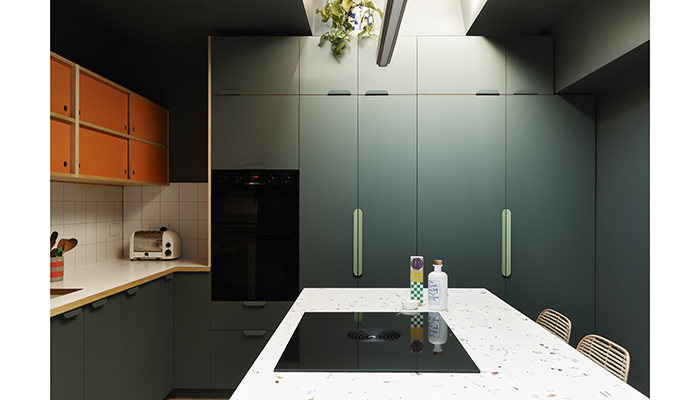
Q: Do you manage installation too?
Fiona: We install where it’s all bespoke cabinetry but typically our projects are installed by the client’s builder or fitter.
Q: How much are clients embracing the eco message?
Fiona: It’s grown rapidly over the last couple of years. Initially people didn’t care, it went over their heads. But when it comes to design Brits aren’t known for being at the forefront of the latest movements. But they’re interested in natural materials now, our wood finishes. They’re also very conscious of durability.
Q: How many staff do you have?
Fiona: We have an operations manager, two designers and we’re looking for a new CAD technician. We’re also looking to hire someone to do our marketing and for a studio manager.
Q: Any plans to open another showroom?
Fiona: We’ve got some interesting conversations going on with some very cool homeware stores in other cities. We’d like little pop-ups where you can make appointments.
Q: How much marketing and advertising do you do?
Fiona: We did some advertising through Instagram in the North which was productive but we’ve relied heavily on word on mouth. Now were starting to think more strategically. The majority of our marketing is through social media because we can’t afford half of the other avenues and print is pretty dead. We’re looking at what kind of things we’re posting and at more targeted advertising.
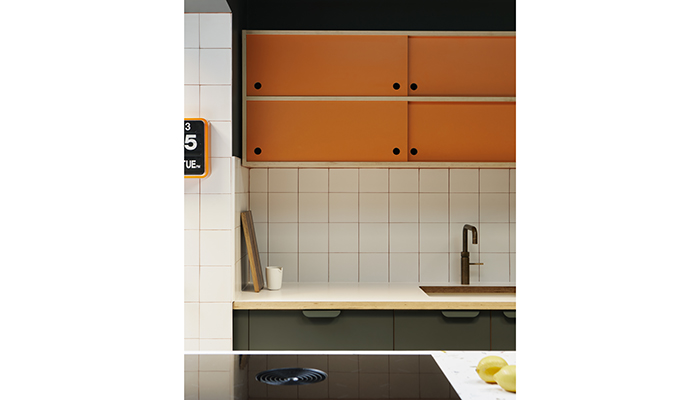
Tags: interview, features, hølte, tom ginnett, fiona ginnett, kitchens
Sign up to our newsletter
Crown Imperial – 5 ‘must have’ kitchen trends for 2026
Sun 21st Dec 2025


























